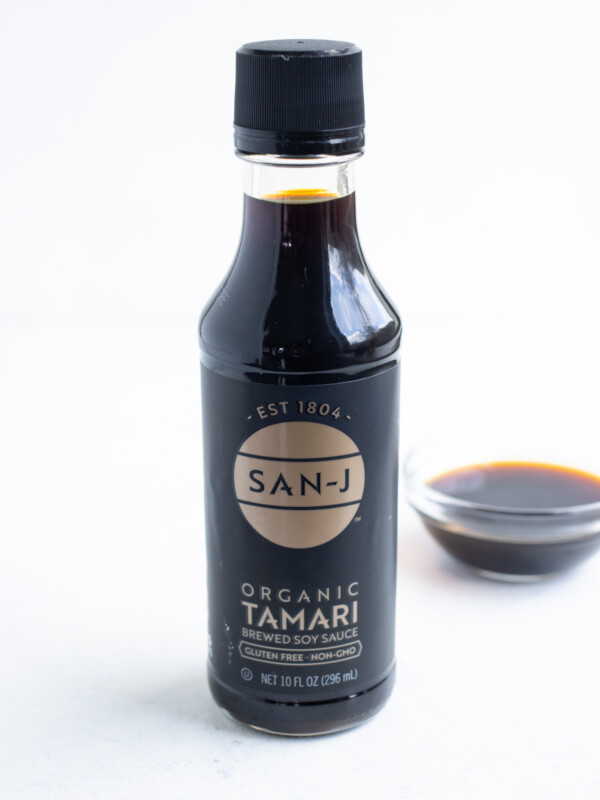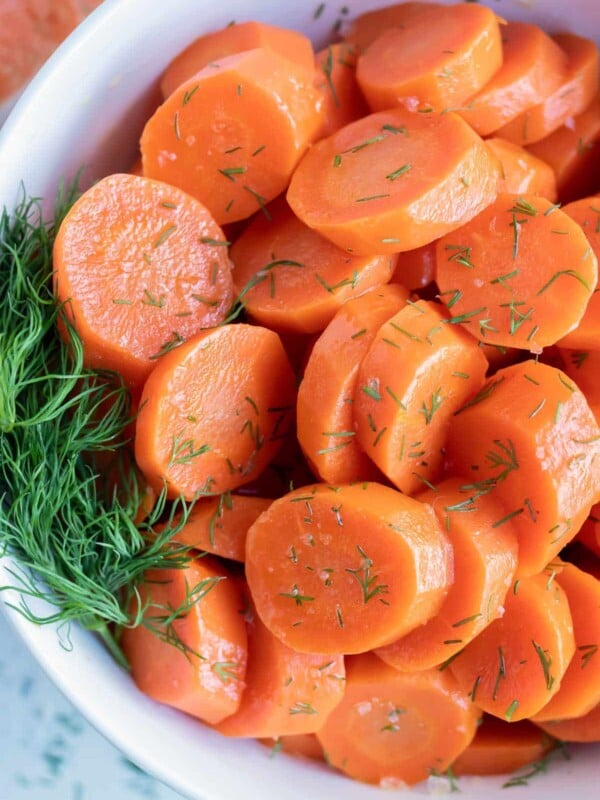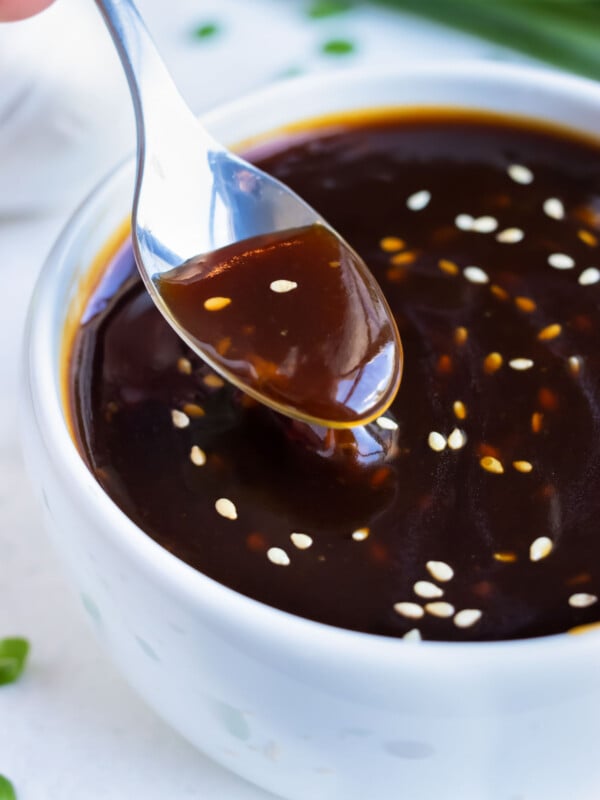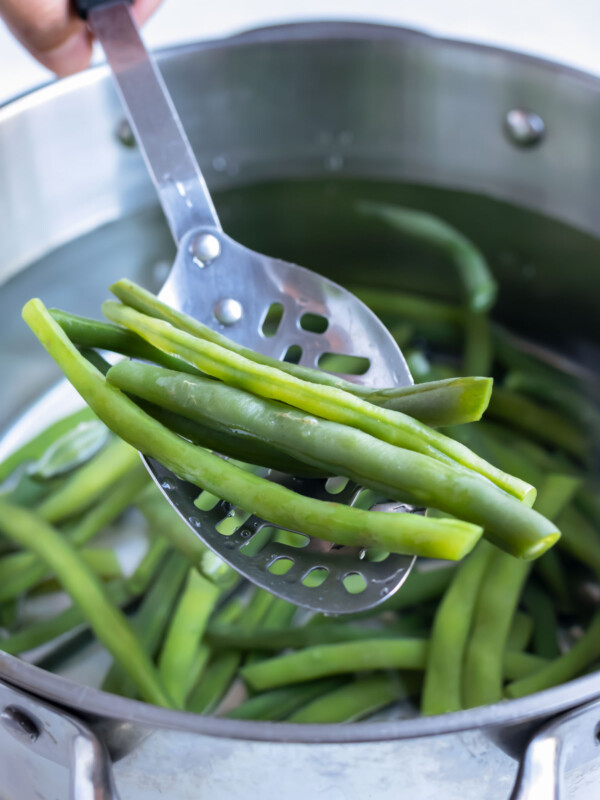What is it?
Tamari is a sauce from Japanese cuisine that is the liquid byproduct of fermented soybeans when making miso paste. While Asian cuisines have many different soy-based sauces, the main difference with this sauce is that during the fermentation process wheat is not added.
Because there isn’t any wheat in tamari sauce, it makes for a great gluten-free alternative to soy sauce. While slightly thicker, it can be brought down to a thinner consistency to match the consistency of traditional soy sauces, too.
How to Use Tamari
Tamari is a great dipping sauce because of it’s slightly thicker consistency. It has a rich umami flavor that gives it a more balanced flavor and is darker in color than thinner soy sauces.
Additionally, you can dip your sushi in tamari sauce because it doesn’t have the strong salty flavor that most types of soy sauces have.
Tamari is an excellent kitchen staple because it can be used in many recipes like soup, salad dressing, marinades, stir fries, and Asian sauces. It’s best used for dipping dumplings, noodles, raw fish, and tofu in.
For any salad recipe that includes roasted nuts, try roasting almonds or another nut of choice in tamari sauce before adding it to the rest of your salad. It’ll elevate your recipe with its unique flavor!
What does tamari taste like?
The biggest difference between tamari and traditional soy sauce is that tamari has a mellow flavor while soy sauce has a sharp, vinegar-like flavor. Tamari has a stronger umami flavor; it’s rich, savory, and meaty. Many people add tamari to their vegetarian and vegan foods to add a flavor of meatiness to the dish.
Is tamari healthy?
Tamari is often consumed in small amounts because it’s usually a part of a sauce or marinade. It’s a more all-natural food source since it doesn’t usually include additives like the typical dark soy sauce. It is slightly higher in protein, and has less sodium compared to any other Chinese or Japanese soy sauce.
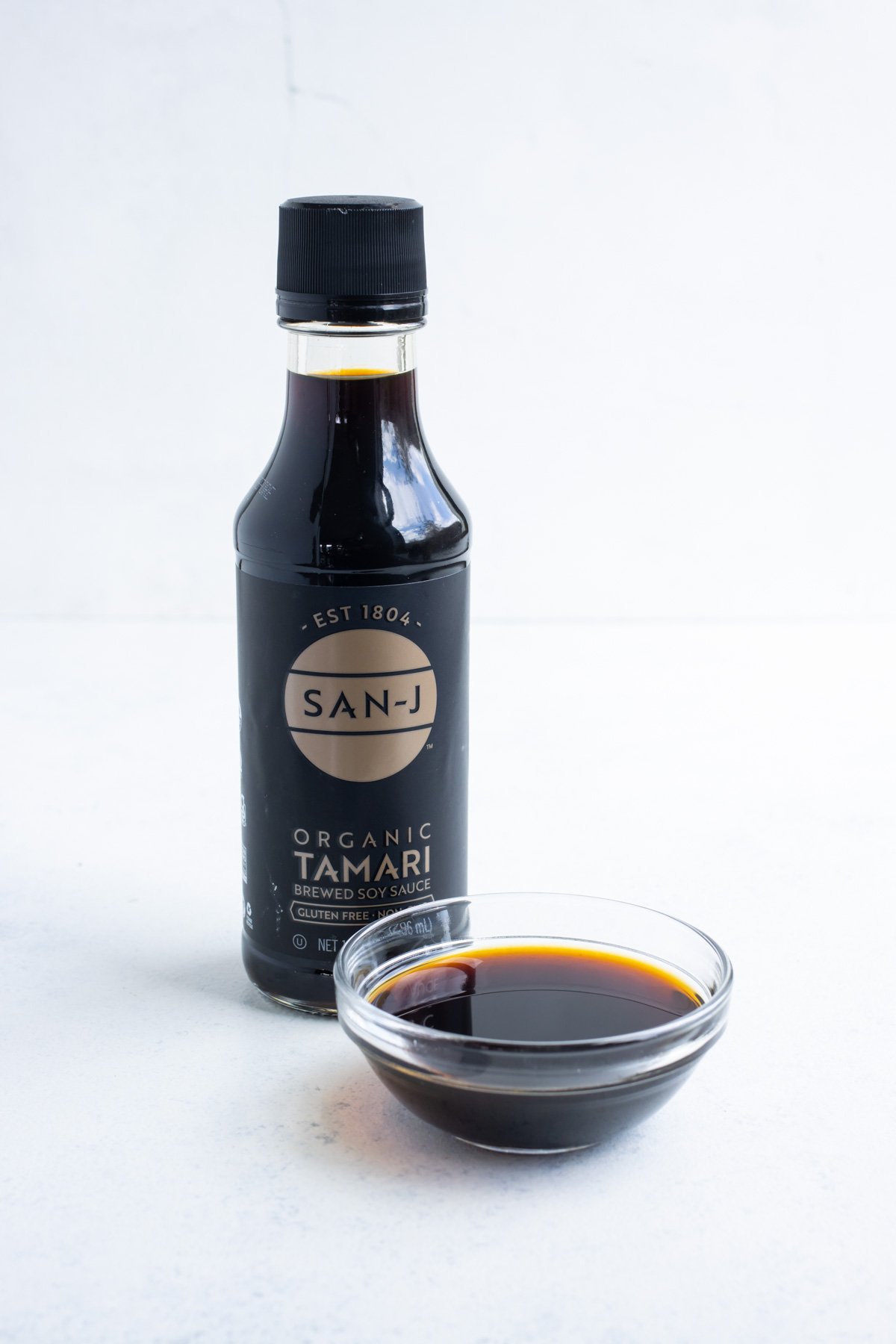
Where to Buy Tamari Sauce
This sauce can be easily found at grocery stores in the Asian aisle. It’s in smaller glass bottles, or you can buy it in big, plastic jugs for a larger quantity. It can also be found in Asian markets if any are near you locally.
While it is gluten-free, it’s important to read the ingredient label AND check for gluten-free stickers on the packaging. Why bother with this if there isn’t any wheat in this sauce? Because it may have been processed in a facility with other products that do contain wheat.
How to Store Tamari Sauce
Tamari does not need to be stored in the fridge. It just needs to be placed in a cool, dry, and dark place (like potatoes). Its shelf life is indefinite as long as the cap is screwed on tightly.
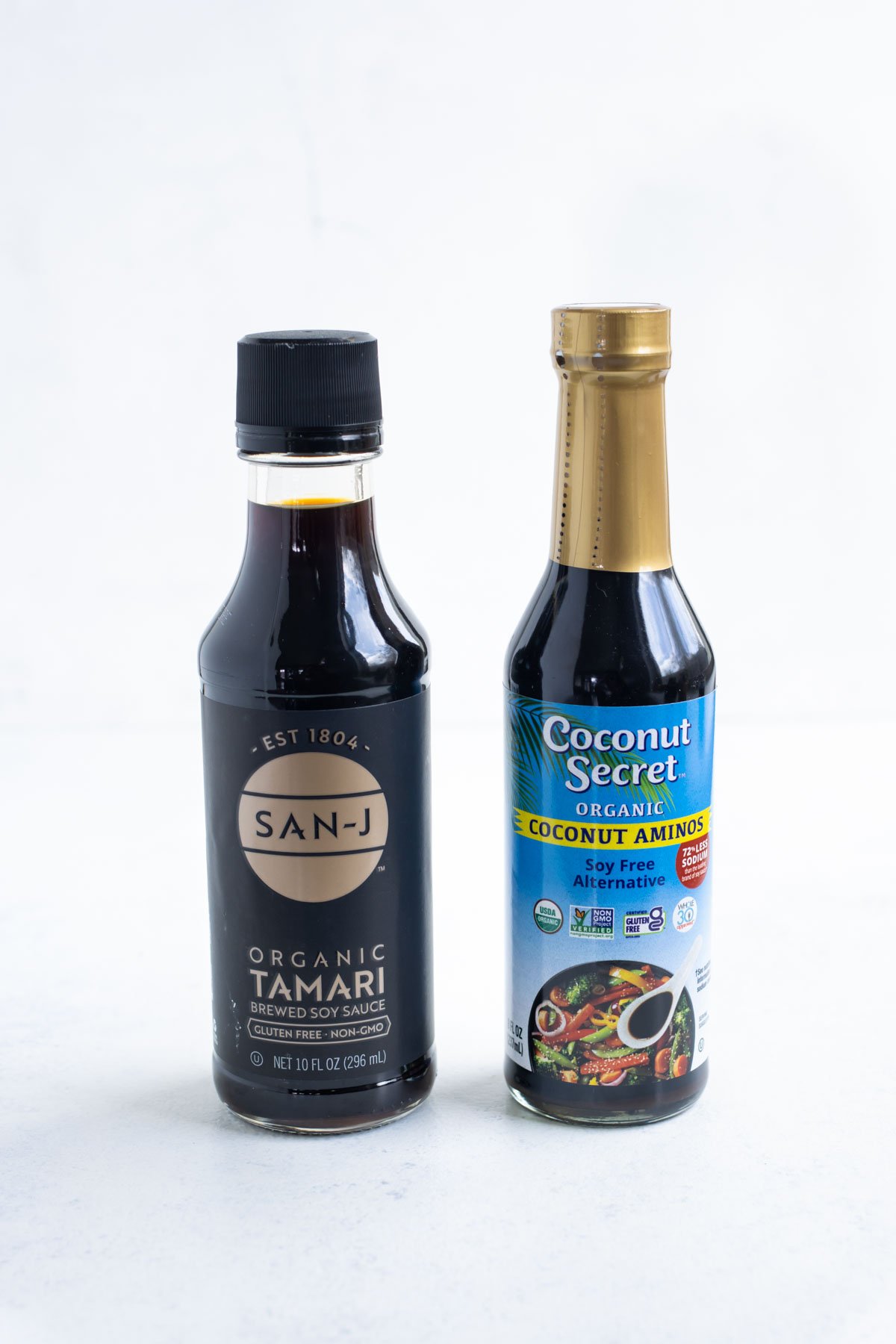
Tamari Substitutes
If you don’t have it on hand, you are more than likely to have a good substitute in your fridge or pantry. Soy sauce is obviously the most common substitute if you don’t have celiac disease or a gluten intolerance.
Coconut aminos and liquid aminos are great substitutes. Any kind of fish sauce can take the place of soy sauce or tamari. Miso paste is very similar in flavor since tamari is made from the liquid byproducts of miso paste. Lastly, Maggi sauce has a strong umami flavor that still has that darker color that Asian sauces have. All of these are good choices and are easily accessible in your grocery stores!
Tamari Recipes
These Vietnamese Fresh Spring Rolls with Peanut Sauce have the perfect amount of tamari to balance out the whole dish. Chicken Satay is easy, quick and delicious! Make homemade Teriyaki Sauce for any Asian meal. These Sesame Noodles with this Honey Sesame Chicken and Broccoli Stir Fry is the perfect combo.
Egg Roll in a Bowl is a healthy take with umami, fresh taste in every bite. Bonus if you make this Peanut Sauce Recipe to dip your egg rolls, dumplings, or spring rolls in. Try tamari sauce instead of soy sauce when dipping your homemade Sushi Rolls!

